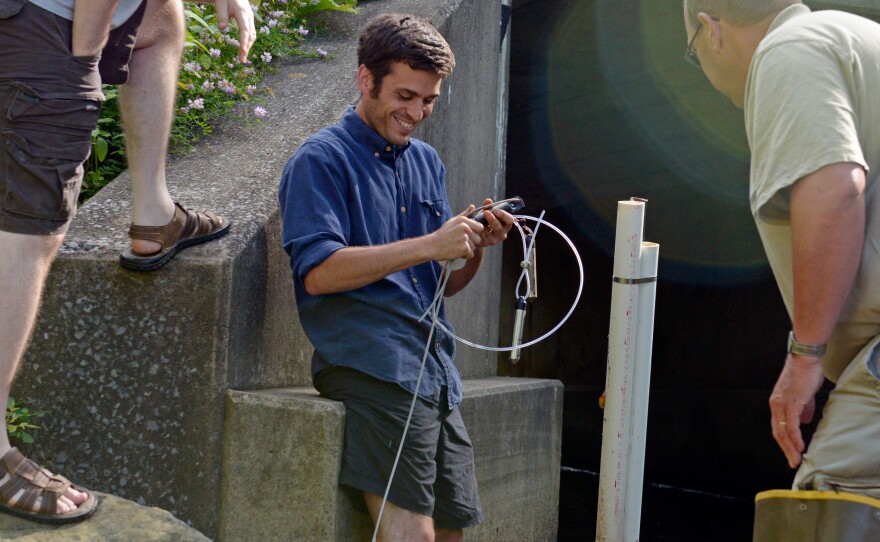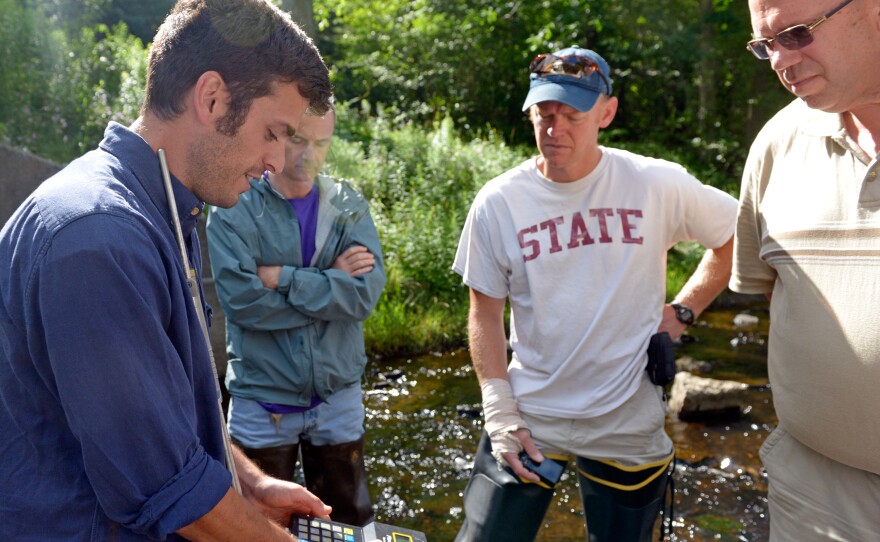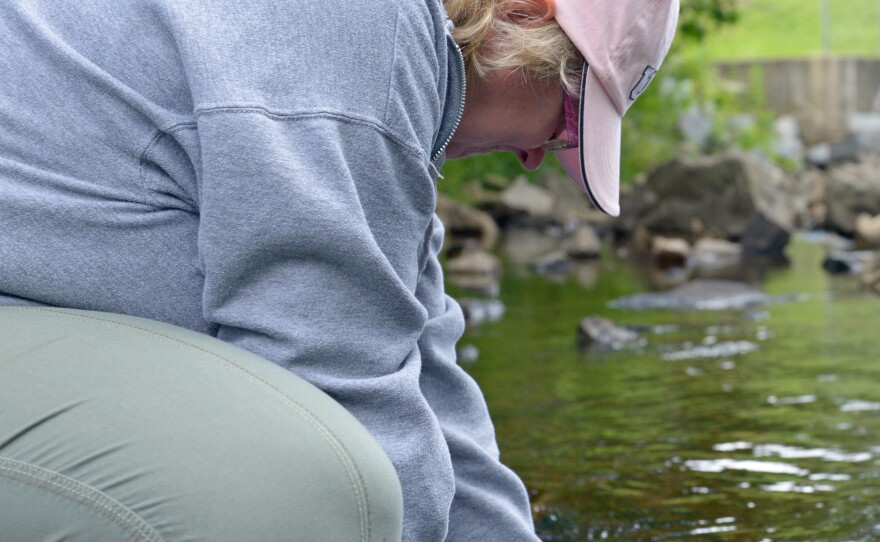Many people are concerned with the environmental impacts of Marcellus Shale Drilling. A group of high school teachers from State College are learning how to keep an eye on the quality of local rivers and streams so they can teach the skill to their students.
Recently, a group of earth science teachers from State College Area High School splashed through Black Moshannon Creek. Some wore waders, others just rolled up their pants to wade through the clear, rushing water.
The teachers are testing for contaminants with the Shale Network. The network is made up of college students, scientists, and even high schoolers, who’ve been collecting data on Pennsylvania’s water quality since 2011. The teachers will use what they learn today to get their students involved in the testing.
Yvonne Pickering is entering her 27th year teaching at State High. She came on the trip to “get her feet wet,” and complete the experiment before taking her students to the site this school year.
"When we’re here with students, we stand back and let them work. It was our chance to get in there and get the field experience the students get so we can really talk to the kids through our experience," Pickering said.
Through their testing, State High and the Shale Network hope to establish a baseline for Black Moshannon’s water quality. That way, they can identify changes to the stream’s chemistry that might be due to natural gas drilling. And the students get to try out the kind of work done by real world scientists.
"They’ve had field experience and worked with equipment, but some of the students had to help write an article, a few of them created a poster, worked with graphing manipulation, did a poster presentation at a shale conference, so we’d like to expand on that," Pickering said.
According to the Susquehanna River Basin Commission, 65% of the water used for Marcellus Shale drilling comes from rivers like the Black Moshannon.
After it’s been used, the wastewater is either injected deep underground, stored in large containers, or purified at treatment facilities before it’s released back into rivers and streams.
Pennsylvania has enacted tighter drilling and wastewater regulations over the past several years, including a Best Management Practice system for the treatment of wastewater.
Despite these efforts, rivers can still become contaminated from poor disposal practices or surface spills.
Andrew Neal is a research assistant at the Earth and Environmental Systems Institute at Penn State. He sits on the riverbank with a silver laptop and some water sensors they installed back in January.
"You’ll see high levels of chlorine and bromine because those salts are entrained with the gas as part of the drilling," Neal said. "So they would come out with the oil and gas."
For the past seven months, the sensors have collected data on the water’s pH, turbidity, dissolved oxygen, and conductivity. Conductivity measures the electrically charged particles in the stream, and Neal says it’s an important variable when testing for natural gas pollution.
"If it’s remarkably higher you can ask if it’s an effect from gas drilling, that’s going on," Neal said. "It’s highly inductive, but it’s the best we can do without getting access to the drill pad."
One of the scientists demonstrates how to take a water sample, then the teachers follow suit. They each draw the water up into a big syringe, then squirt it through a fine mesh filter into a bottle.
After the samples are collected, they are taken to a lab on Penn State’s campus for analysis. The results will be added in a few days to the Shale Network’s growing database of information about the state of Pennsylvania’s rivers and streams.














